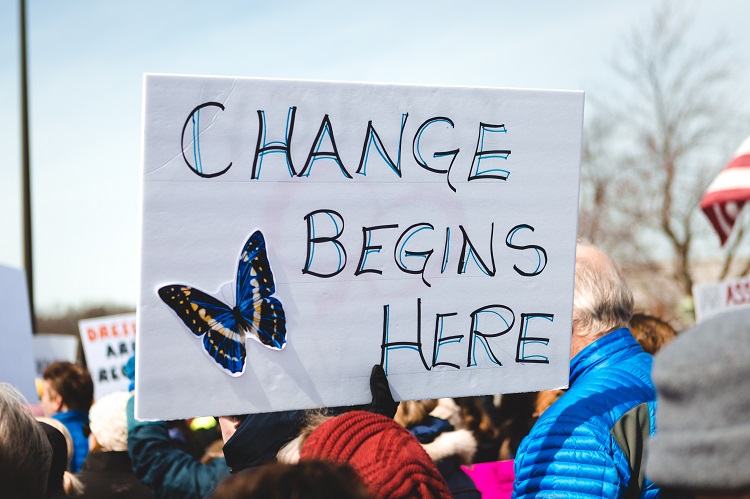Jacob Lange was the summer 2021 intern for the Initiative on Faith & Public Life. He is a graduate of Concordia University, Irvine where he was a history and political thought major with minors in classical languages, law and politics, and English.
Strange constructions adorn the landscape of Washington, DC. A towering stone obelisk, a black scar carved into a green field, a platoon of ghostly soldiers frozen in time, a Greco-Roman temple pulled from history and transplanted into a modern American city. Millions of tourists flock to these constructions each year in some form of patriotic pilgrimage to crane their necks and look up at these monuments. They are, after all, quite monumental. The Washington Monument is the tallest structure in the city, dominating the landscape and serving as a convenient reference point for any beleaguered tourists. Thomas Jefferson and Martin Luther King stand tall above those who visit them, peering doggedly into some unknown future. Even seated, Lincoln stares over the heads of those who snap pictures of him, gazing out over the reflecting pool.
What draws people by the millions to these memorials and monuments? Photographs and all relevant information about them are readily available on the internet, accessible from wherever the inquisitor may ordinarily reside, yet they remain a beacon to travelers and residents alike. So what prompts so many to come and look up at these monuments and memorials? Why do we join these figures in their silence?
In order to answer this question, we must first understand what a monument (or memorial) is and its purpose. At the most basic level, a monument is something deliberately constructed to serve as a physical reminder of a person or event that a nation or community deems worthy of remembrance. Most of the monuments in Washington, DC memorialize either an event, such as World War II, or a specific historical figure, such as Abraham Lincoln.
Despite their differences, almost all of the memorials follow a fairly predictable pattern. They usually include an imposing edifice or statue with a selection of poignant quotes or relevant information related to the subject memorialized. This pattern reflects the dual nature of memorials. They are both austere and intimate. They seek to communicate both the gravity of the person or event and also their distinct humanity.
Take the World War II memorial, for instance. Located between the Lincoln Memorial and the Washington Monument, it is composed of an impressive collection of fountains and pools wrapped by white marble pillars. From a distance, the majestic design evokes a sense of wonder and awe. But as a visitor approaches, he notices details that begin to personalize the monument. The name of his own state on one of the pillars. Quotes from the War’s combatants. And as he approaches the rear of the memorial, a wall of gold stars meets him, each one representing an American life lost. Now, ensconced in the memorial, he sees more clearly the stories of those who fought and died and how their stories touch his own life. World War II remains a global event of unprecedented destruction and consequence, but for the visitor, there is a new and personal stirring inside.
This is why people by the millions are drawn every year to these sites. For while they offer far less information than a book or film might provide, they invite viewers into a space where individuals can reflect and partake in the pinnacle of human achievement, honor, courage, and sacrifice.
Thus, we come to memorials because memorials are where finite, fallible human beings become symbols of the virtues and characteristics we esteem. Ulysses S. Grant becomes a noble knight; Martin Luther King, a warden of justice; and Thomas Jefferson, a classical rhetor. The memorials take the best, most praiseworthy facets of their subjects and elevate them, creating a physical place where those traits can be fully appreciated.
Here, let me be abundantly clear. This is not to say that those memorialized should be divorced from their wrongs and controversies. There are cracks in the marble façade of every historical figure. Tragedy is sown through the foundations of every war memorial. But in spite of this, the men and women that we choose to honor and commemorate remain worthy of our attention and reflection. This is why we go to memorials and why we visit monuments. We go to witness that there is something worth emulating. Even with our own personal and public failings, we are called in their presence to search our own lives for something that might be worth remembering, maybe not by a nation, but at least by those who know us. And so, in this hope, we go to memorials and we look up.



